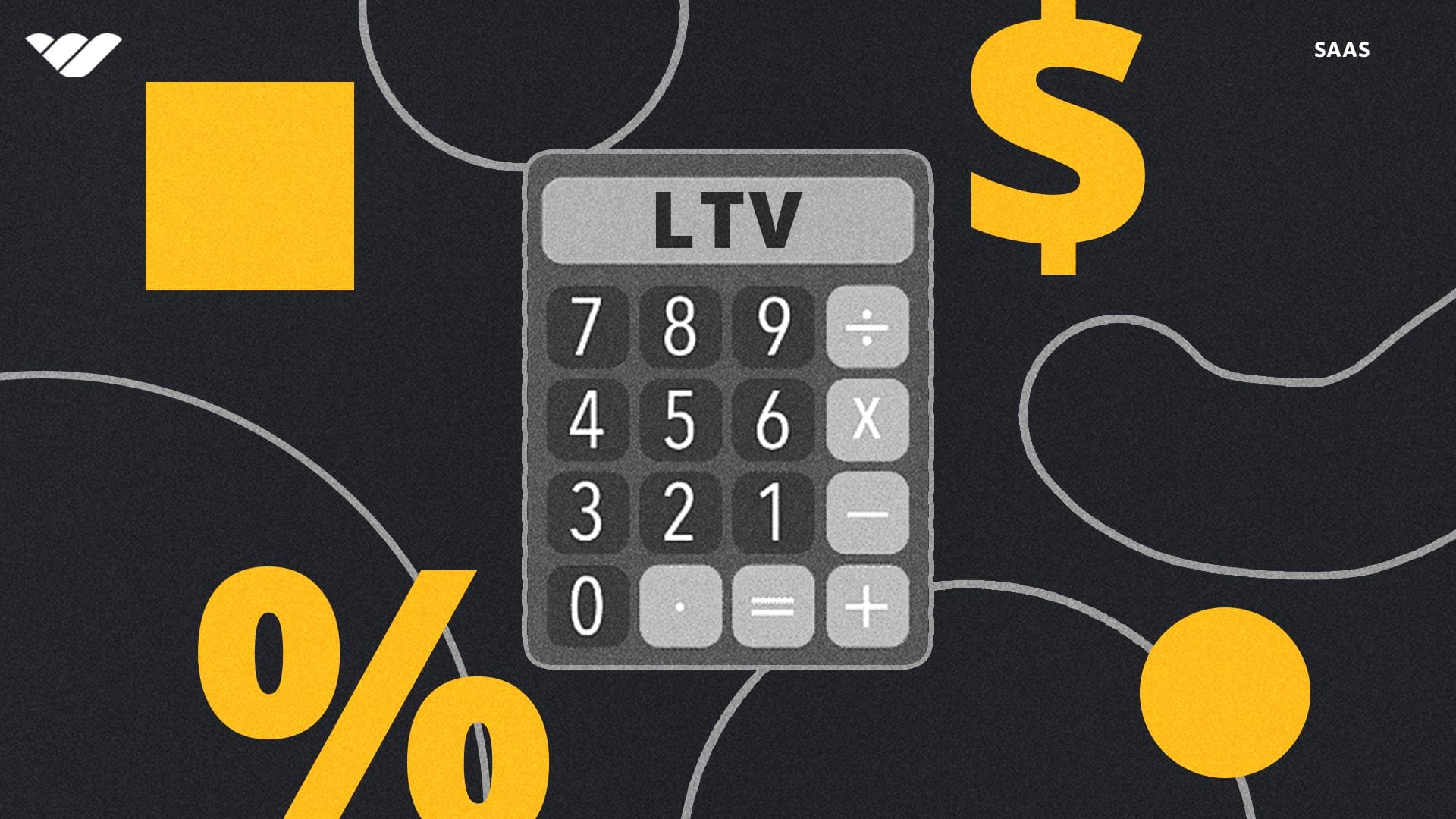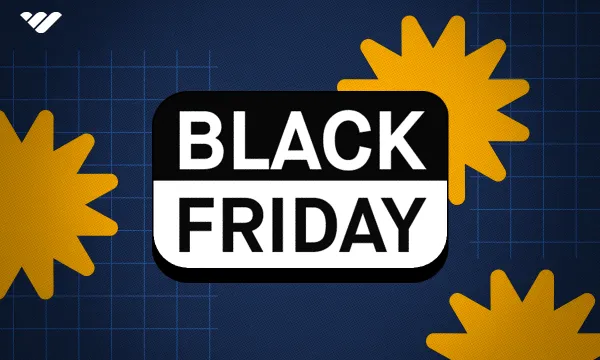SaaS, or software-as-a-service, is often viewed as one of the fastest growing industries in the economy, and it’s no exaggeration to describe its recent history of growth as exponential. The industry itself continues to expand in leaps and bounds, and the top SaaS companies can sustain growth rates in excess of 30 or even 40 percent.
In fact, research by McKinsey in 2021 pointed to 22% being the median revenue growth rate among U.S. SaaS companies with over $100 million in revenue. This means that the bar is extremely high, and you need to do the best job possible when it comes to balancing the needs of your SaaS business in order to compete.
To give yourself the best chance of doing so, you need to arm yourself with various SaaS metrics and key performance indicators (KPIs) that will give you high-quality, actionable intel. This guide will take you through some of the most important ones, so read on!
Why Track SaaS Metrics?
By keeping an eye on certain SaaS metrics, you’re not only empowering yourself with information, but also giving yourself all of the data required for identifying your current position, planning for the future and setting strategy, and making the right decisions.
A solid grasp of these metrics can also help you when it comes to dealing with potential investors when it’s time to secure funding. Data-driven decision-making is crucial in today’s competitive environment, and it allows you to be as proactive as possible—which investors love.
Categorizing SaaS Metrics
In order to add clarity to some of the main SaaS metrics and better show you what they give you, we’ve categorized them into several groups. These include metrics that revolve around customer acquisition, the economic health and situation of your business, customer engagement, retention, and growth.
It stands to reason that different SaaS metrics may be more or less important to you depending on what stage your company is at. If you’re still searching for your problem-solution fit and aren’t at the MVP stage yet, you aren’t too worried about things like retention. There will however come a point, assuming your company keeps growing, that elements like retention become crucial to the health of your business.
Acquisition Metrics
#1. Customer Acquisition Cost (CAC)

Starting fairly simple, your SaaS business’ CAC (sometimes called cost per acquisition or CPA) is defined as the cost of acquiring a new customer. You need to consider all of the costs incurred when attempting to acquire a new customer, meaning the total cost of sales and marketing, including your advertising expenses and sales commissions.
The total cost of acquiring customers then needs to be divided by the number of customers you do acquire for that period, giving you the value of your CAC or cost of acquiring a single customer. This can then allow you to benchmark against your competitors and the typical metrics for your industry, letting you assess the effectiveness of your marketing spend and business model.
Customer acquisition cost can be a key metric at every stage of a company’s life, but new companies find it especially critical. If CAC is too high at the start, a company simply may not have enough capital to hit those growth milestones. Many companies have been able to get off the ground far easier by reducing CAC in innovative ways, such as relying on demos and free trials of their products instead of hiring expensive salespeople.
CAC = (Total Sales and Marketing Expenses) / (Number of New Customers Acquired)How to Improve CAC
Optimize marketing channels to lower acquisition costs, target high value customers, enhance your SaaS value proposition to attract more customers.
#2. Months to Recover CAC
CAC is a key metric for your SaaS business because you can do a lot with it. It gives you plenty in its raw form, but looking at it from a return-on-investment point of view can also be useful.
If you divide your CAC by the monthly revenue earned from a customer, you can see how long it would take for the customer to repay the amount spent on acquiring them and start earning you actual revenue. This also gives you an idea of how long you need to retain a customer—if they’re churning out before covering their CAC, then you need to ask some serious questions about your business model’s feasibility.
Months to recover CAC is also known as your CAC payback period. It can be difficult to manage because of how important customer acquisition is when your company is growing—many companies have to walk a very fine line when it comes to cash flow at this stage, navigating a tight burn multiple and a high months to recover CAC metric, all while trying to grow their customer count fast.
Months to Recover CAC = CAC / (MRR Contribution per Customer)How to Reduce Months to Recover CAC
Improve initial purchase value by offering higher-tier plans and add-ons while onboarding, decrease CAC, implement referral programs.
#3. ACV:CAC Ratio
Annual contract value is just as important as CAC, but it looks at customer acquisition from a different perspective. ACV is a result of your total annual contract value of all customers divided by the number of customers you have. This gives you the annual contract value of a single customer.
Now, you can take the ratio of CAC to ACV for a direct comparison of what you spend on acquiring a customer to how much revenue they bring in. You can use this information to make better sales and marketing decisions, and optimizing your ACV:CAC ratio can lead to even more profitability.
ACV:CAC Ratio = ACV (Annual Contract Value) / CAC (Customer Acquisition Cost)#4. Lead-to-Customer Rate
We’ve only looked at successfully acquired customers in the previous SaaS metrics, but it’s very unwise to ignore leads when looking at your business’ KPIs. Your lead-to-customer rate, sometimes known as lead-to-account or lead-to-close, gives you a clear idea of your marketing effectiveness by showing you how many leads become paying customers.
You can calculate your lead-to-customer rate by dividing the number of paying customers by the number of leads generated, and use it hand-in-hand with other metrics like leads by lifecycle stage to produce even more actionable data.
It will help to implement closed-loop reporting in order to do this. Remember to check out what your Whop business dashboard can do—if you integrate it with your own customer relationship management processes, you can start analyzing how customers close. This sort of information can help you understand which marketing campaigns work best!
- Conversion Rate: This is a simplified form of the lead-to-customer rate, quantifying how many visits to your websites result in orders being placed in percentage form.
- Cost Per Lead: Just like with CAC, it may be useful to evaluate the amount of money you spend to acquire a lead.
- Inbound Leads: These identify exactly where visitors are entering your website from, letting you position your website ideally for higher quality leads.
Lead-to-Customer Rate = (Number of New Customers / Number of Leads)How to Improve Lead-to-Customer Rate?
Optimize sales funnel for less friction, tailor approach to different leads, enhance product value proposition.
#5. Leads by Lifecycle Stage
Your sales processes can range anywhere from days to even a year depending on your SaaS products, so in order to improve this area it’s important to identify where your leads are in terms of your own sales process.
Generally, your leads will come through the funnel via different stages. At the beginning, you’ll generate leads from marketing. These potential customers, or prospects, might then come back to your website for a second look, or download some of your informational materials. At this stage, they become a marketing qualified lead (MQL).
Once the prospect moves beyond this initial research phase, they’re worth following up with. This is where your sales team can step in, aiming to capitalize on that interest and open a deal. At this stage, the prospect is a sales qualified lead or SQL.
Here, you can compare how many prospects transition from leads to MQL and MQL to SQL. This’ll give you a great idea of where you need to improve, whether it’s driving traffic to your website or the pulling power of your website and marketing materials.
If your MQL-to-SQL numbers are good, you can infer that your marketing team is generating high quality leads. You can then plug in your lead-to-customer rate! A low lead-to-customer rate on the back of this information will then suggest that your sales team isn’t able to convert those high quality leads to paying customers. This is something you can then act on however you choose, but with the confidence of having very solid data at your back.
- Sales Velocity: This SaaS metric allows you to see how fast your business is earning revenue. It is calculated by multiplying your number of SQLs, how often you close them, and average revenue per deal. Then divide the result by sales cycle or process length.
Number of MQLs = Count of leads that meet the MQL criteria
Number of SQLs = Count of leads that meet the SQL criteria
... and so on.#6. Qualified Marketing Traffic
As your SaaS business grows, it’s important to recognize that an increasing user base creates website traffic that needs to be separated out from traffic that you attribute to marketing. This is especially so when you require users to log in via your website if they want to use your software.
This means that you need to separate returning users from qualified marketing traffic, which you’re interested in for an entirely different reason. If you don’t take this step, you may end up counting returning users together with your marketing traffic, which will result in a cascade of incorrect data when you’re looking through your marketing and customer acquisition KPIs.
- Traffic: A simple metric that counts the number of visitors to your website. You can learn plenty from this, but consider using qualified marketing traffic instead especially if your customers have to visit your website regularly to log in.
- Hype Ratio: You can also measure the level of “hype” around your company by adding your search volume, social media mentions, and media coverage and dividing that result by your revenue. This can tell you if you’re over-hyped or under-hyped!
Qualified Marketing Traffic = Total Visitors x Percentage of Qualified VisitorsEconomic Metrics
#7. Gross Margin
The gross margin of your business is likely a metric you’re already familiar with, but it bears mentioning given its importance. It’s the result of subtracting your cost of goods sold (COGS) from your revenue, then taking this figure as a percentage of that same revenue. As an SaaS business owner, your COGS is likely to include items such as software development and hosting costs.
Quite simply, gross margin paints an excellent picture of your profitability, with a high gross margin indicating a high level of profit and a low or negative gross margin alerting you that serious evaluation may be needed.
Gross Margin = (Total Revenue - Cost of Goods Sold) / Total Revenue#8. Lifetime Value (LTV)

LTV, similar to CLV, is a critical SaaS metric that assesses a customer’s long term value to your business. You can calculate your LTV by multiplying the value generated per customer by the length of their lifespan as a customer.
As you might imagine, customer lifespan can vary wildly depending on your product. You may be looking at repeat purchases every few years when it comes to computer processors or hard drives, but for subscription-based SaaS products you may be looking at monthly transactions and lifespans of a couple of years.
So, if your business charges $20 per transaction and your average customer sticks around for 24 months, your LTV is $480. You can make the most out of this metric by working out the LTV of your different customer segments rather than your overall business. That’ll allow you to identify which customers bring the most revenue into your business, and various highs and lows will also stand out for your attention, allowing you to adjust strategy in certain segments if required.
- Magic Number: Now that you have your LTV, you can divide it by your CAC. This ratio, sometimes called the “magic number”, shows you how many times over your customers are paying off the cost of acquiring them. If the ratio is less than one, you have a problem—it’s a clear red flag since it means you’re earning less from customers than you’re spending to acquire them in the first place.
- CAC:LTV Ratio: This is simply the inverse of the magic number, but it’s a useful way to represent the cost of acquiring a customer as a percentage of how much revenue they bring in. It shows you the health of your marketing programs, and also demonstrates how when a customer’s lifetime value is high for a business, spending more on acquiring them can easily be justified.
LTV = Average Revenue Per User (ARPU) x Customer LifespanHow to Improve LTV
Establish long term relationships with customers and provide top quality customer service and support, continuously refine and improve SaaS offering, upsell and cross-sell.
#9. Burn Multiple
Your company’s burn multiple looks at how quickly you spend the cash that you have. It’s especially important for startups, who may have a more finite pool of available cash, and it gives you an idea of how long you can sustain operations before needing to raise funds.
To calculate your SaaS business’ burn multiple, divide your current cash balance by the rate at which you spend cash every month. A high burn multiple means that you have a lot of time before you burn through your available funds, and a low burn multiple indicates that you may need to think about raising funds sooner rather than later.
Engagement Metrics
#10. DAU and MAU
Daily active users and monthly active users are simple but extremely valuable data points. They tell you exactly how many unique users are interacting with your SaaS product on a daily and monthly basis, and both provide an excellent reflection on the level of customer engagement you have.
DAU and MAU can also contribute to your customer engagement score since they give you an idea of how often users are logging in and actively using your software.
DAU = Number of unique users in one dayMAU = Number of unique users in one month- Activation Rate: Depending on the nature of your SaaS offering and your customer profile, you may also need to consider this metric. It tells you when a customer actually unlocks the value of your service, such as when a user orders their first item using a shopping app, or keeps using the service after their free trial is over.
#11. Customer Engagement Score (CES)
Customer engagement score isn’t a standard SaaS metric but most companies tend to use a customized version of it thanks to the importance of quantifying customer engagement. This cannot be understated, since the entire point of an SaaS business is to have customers integrate your software into their daily business routine.
The reason that CES isn’t standardized is that different SaaS products may be used in different ways and therefore a “one size fits all” model doesn’t really work. For this reason, you should consider building a CES metric that works for your products.
One way to do this is to analyze the way your existing customers use your products and build a model from there. If you know certain customers are happy with the product, you can identify certain data points such as how often they log into the software, what sort of usage milestones they hit, and so on.
As mentioned previously, you can use metrics like DAU and MAU in this model, and also tie in other KPIs such as retention rate, net promoter score, customer satisfaction score, and so on.
Once you have a list of things to look for and have assigned weights to them based on their importance, you can set up an overall customer engagement score that gives you an at-a-glance reference for how engaged a customer is.
Customer Engagement Score = Σ (Weight of each action × Number of times the action is performed)#12. Customer Health Score
Customer health score is extremely similar to customer engagement score in that you might have to build your own customized version of it. It also serves just as important a purpose—while CES evaluates how engaged your customers are, your customer health score attempts to analyze the health of a customer’s relationship with your business and whether there’s a risk of it ending.
It’s extremely important to try and be proactive when it comes to managing customer relationships, and predictive analytics helps in this regard since if a customer informs you that they want to cancel their subscription, it’s generally too late to act. If on the other hand you are able to flag the possibility in advance, you can get ahead of the problem.
To get started putting your customer health score KPI in place, you’ll need to look at the different data points that might serve as signals for either high customer loyalty or potential customer churn. Then, you need to start tracking this information over time.
If, for example, the number of your customer’s employees using your software or the amount of time they’re using it starts to dive, you might be seeing a problem. You can also look at their top performers—if all of their top agents used it one month but fewer and fewer high performers use it in the following months, you’re seeing another flag.
Just like with CES, you can then weigh these different values, and build an overall customer health score that allows you and your employees to monitor your relationships with customers and step in whenever the data starts to alert you to a potential problem in the making.
To ensure maximum customer health, consider selling on Whop! From fantastic 24/7 customer service to an enterprise-level affiliate system and real time tracking of all the KPIs you need via the Whop business dashboard, Whop has everything—and you can get started in minutes.
Customer Health Score = Weighted sum of various factorsRetention Metrics
#13. Customer Churn Rate

Customer churn rate is one of the most important SaaS metrics for you to look at because it refers to the amount of customers you lose in a given period. This is absolutely critical because subscription-based business models are dependent on customer retention, and churn directly equates to a loss of revenue.
If that wasn’t bad enough, churn can actually go even deeper. All of the acquisition metrics discussed above show that customer acquisition—or just making a sale—isn’t a simple process.
You’re putting a lot of effort and resources into getting customers through the funnel, and all of that comes with a cost. Customer retention means not having to endure that cost again and again. The “months to recover CAC” metric by its very existence underlines the importance of not letting customers churn fast.
To calculate your customer churn rate, compare the number of customers you lose during a period to the number of customers you started that period with. That figure, expressed as a percentage, is your churn rate.
Customer churn rate should be one of your business’ main KPIs, and keeping this rate low is paramount. If it’s higher than it should be, it could be down to various causes—your pricing models don’t match the value you’re providing, or your customer service may be falling short.
You can fix these issues once you identify them, and one way to do so easily is by moving your business across to Whop. By taking care of things like 24/7 customer service and keeping your customers happy, Whop allows you to put all of your time and effort into getting your products and services just right.
Whatever the cause of elevated churn, it’s important that you find out why it’s happening and put strategies in place to reduce it. It’s also vital to try and find patterns when it comes to churn—if a certain profile of customer is terminating their subscription, you can better tailor a strategy to deal with that profile of customer.
Customer Churn Rate = Number of Customers Lost During a Period / Number of Customers at the Start of the PeriodHow to Reduce Churn Rate
Identify exact reasons for churn and address them, enhance customer onboarding and training, implement customer retention strategies.
#14. Revenue Churn Rate
Revenue churn rate shares some similarities to customer churn rate, but paints a more detailed picture of churn since it looks at the percentage of revenue lost due to customers either canceling subscriptions or downgrading plans. This can be valuable information because you may have a low churn rate in a given period but high revenue churn, meaning that you lost a significant proportion of high-paying customers in that period.
To calculate revenue churn rate, use the revenue figures rather than raw customer numbers that you did when calculating customer churn. That is, take the amount of revenue lost due to churn in a period and divide it by the recurring revenue you had at the start of that same period.
The value of revenue churn rate is that it draws a straight line between churn and your bottom line. Every customer is important, but losing customers that subscribe to your top-tier plans hurts your finances a lot more.
Remember that Whop can help you deal with churn in several ways. As difficult as it is to stop a customer from leaving once that decision has been made, Whop does give you an option in this regard if you enable it, incentivizing customers to stay on via a one-time discount offer if they initiate cancellation.
Revenue Churn Rate = (Revenue Lost from Churned Customers / Total Revenue at the Start of the Period) × 100#15. Logo Retention
Logo retention is yet another way to measure retention, but this time we’re looking at the percentage of companies (“logos”) that continue to subscribe for and use your SaaS products. The main distinction drawn here is that the number of unique companies are measured, rather than the number of customers you have, groups of whom may be users at a single company.
Essentially, logo retention is a metric that allows you to focus on retention by looking at key accounts rather than raw user numbers. This is a valuable way of looking at it, because it’s likely that your organization is structured to handle accounts rather than individual users—and ensuring retention may come down to relationship management via those accounts.
To calculate logo retention, take the number of companies who were paying customers at the start of a period. Then identify how many of these companies are still paying customers at the end of the period, and divide the latter by the former to get a percentage result of up to 100%.
Logo Retention Rate = (Number of Company Accounts at the End of a Period - Number of New Company Accounts Acquired During the Period) / Number of Company Accounts at the Start of the Period#16. Net Revenue Retention (NRR)
Net Revenue Retention (NRR) or Net Dollar Retention is a good overall indicator of retention as it shows the percentage of revenue retained from existing customers over a given period. It tells you that your SaaS business is able to retain customers while also growing the revenue generated from them in a sustainable manner.
To calculate NRR, take the recurring revenue from existing customers at the end of a period and divide it by the recurring revenue from those same customers at the beginning of the same period. This’ll show you how much your recurring revenue from those customers is growing, and you can express it as a percentage.
NRR differs somewhat from customer churn, revenue churn and logo churn because those SaaS metrics look purely at retention and keeping customers. NRR on the other hand is valuable because it measures the company’s ability to increase revenue from existing customers, which is extremely important for growth.
Net Revenue Retention (NRR) = [(Starting MRR + Expansion MRR - Churned MRR) / Starting MRR] × 100How to Improve Net Revenue Retention
Monitor usage data to identify un- or under-utilized features and train customers to use them, drive upsell opportunities with tailored marketing efforts, review pricing regularly to align it with customer value.
Growth Metrics
#17. Annual Recurring Revenue (ARR)

Annual recurring revenue is a key SaaS metric that attempts to predict the recurring revenue your business will generate over a year, assuming no significant growth or churn when it comes to customer numbers.
To calculate your ARR, multiply the number of paying customers by the average recurring revenue per customer per year. This doesn’t take into account the possibility of one-off payments or other sorts of revenue, so it provides you with a metric you can easily use when budgeting or forecasting.
In fact, many SaaS companies use ARR to measure their growth rate by comparing the ARR of one year to that of another. An ARR of $10 million one year followed by an ARR of $13 million, for example, would indicate a growth rate of 30%. This in turn suggests that the company is doing a good job when it comes to acquiring new customers and increasing revenue from existing customers.
ARR = Monthly Recurring Revenue (MRR) x 12How to Improve ARR
Develop upselling strategy along with incentives for customers to upgrade to higher-tier plans while also improving customer acquisition.
📚 ARR: The Ultimate Guide to Annual Recurring Revenue
#18. Monthly Recurring Revenue (MRR)

Monthly recurring revenue is similar to ARR, but taken on a monthly basis. It’s calculated in exactly the same way with the same assumptions, meaning that you aren’t accounting for one-off payments or revenues and simply looking at the total revenue you can expect to receive from your existing customers each month.
Just as with ARR, MRR can be analyzed month over month to look at your company’s growth rate. It’s a simple but extremely important SaaS metric since most SaaS businesses offer their software on a subscription model.
Furthermore, you can also analyze your MRR (as well as your ARR) on a per-customer basis. This way, you can identify customers that contribute the most to your growth, and initiate strategies such as loyalty or referral programs that may actually result in further growth.
MRR = Sum of all recurring subscription revenues for the monthThis calculation typically involves:
- Adding up the monthly value of all active subscriptions.
- For annual or non-monthly subscriptions, dividing the total subscription value by the number of months in the subscription term to get the monthly equivalent.
ARPA: The average revenue per account is another way to understand your business in revenue terms. It’s period-agnostic but looks at growth similarly to ARR and MRR, allowing you to understand how many customers (or accounts) you need to sustain your business.
How to Improve MRR
Focus on expanding your customer base through marketing and sales, upsell and cross-sell customers, regularly review and adjust pricing.
#19. Expansion Revenue
Expansion revenue is a SaaS metric that looks at these more valuable customers in greater detail. It’s well known in business that customer loyalty tends to be an indicator of greater spending, and we’ve also looked at metrics such as net revenue retention that look at increasing the revenue from retained customers.
The customers that you earn the most from may on one hand register for your top tier plans, either coming in at the top or upgrading from lower tier packages. They may also make extra purchases by picking up any additional options that you offer, and generally can be counted on to buy whatever you’re selling.
Expansion revenue is the sum of all of these extra purchases, including up-sells, cross-sells, and add-ons. By analyzing this expansion revenue information, you can look at how your different departments or account teams are getting the most from customers who depend on your products.
Expansion Revenue = Revenue from Upgrades, Add-ons, or Additional Services from Existing Customers#20. Customer Concentration
As the name suggests, customer concentration looks at how dependent your company’s revenue is on a small number of customers. This is an extremely important KPI not just for SaaS businesses but for practically any B2B company—B2C firms sell to a large number of consumers, but many B2B businesses rely on a limited number of customers, or even just a sole customer.
While a high customer concentration does lend itself to relationship building and may allow you to serve your customers very well, it does pose a significant risk. A variety of factors could lead to one of your top customers terminating the relationship, which could have an extremely adverse effect on your revenues if you were reliant on that customer.
To calculate your customer concentration SaaS metric, you can take the amount of revenue generated by the top percentage of customers and divide it by your total revenue. You can also break this down by accounts if that’s how your business works—if you have eight accounts but one of them brings in 70% of your revenue, that’s a high customer concentration.
Having a close eye on this metric allows you to keep an eye on the level of risk associated with your customer base. This is something that the highest levels of the company’s management needs to be aware of, since there’s a legitimate risk of the rug being pulled out from under the business if the top customers decide to walk out for whatever reason.
Customer Concentration = Revenue from Top Customers / Total Revenue#21. Customer Monthly Growth Rate (CMGR)
Customer monthly growth rate is one of the metrics that can help you in the battle against customer concentration, because it looks at how many new customers you’re bringing in every month.
To calculate your CMGR, compare the number of new customers you added in a given month to the number of customers at the beginning of the month. This is an extremely important SaaS metric since it quantifies growth, and while it looks at customer numbers rather than revenue, it’s extremely important for a growing company.
A low CMGR can indicate that growth potential is lacking, and ought to be investigated. While no market is infinite in size, it’s possible that a low CMGR is tied to failures in customer acquisition efforts. It could therefore flag that a pivot in marketing strategy is required.
CMGR = [(Number of Customers at End of Period / Number of Customers at Start of Period)^(1 / Number of Months) - 1] × 100#22. Net Promoter Score (NPS)
Net promoter score is a customer experience metric that is used across various industries to assess the level of customer satisfaction and loyalty toward a company or product. In general, NPS is calculated by asking a customer how likely they are to recommend the product or service to a friend or colleague on a scale of 0 to 10.
Based on their reply, customers fall under the categories of Detractors (0-6), Passives (7-8, and Promoters (9-10). You then subtract the number of detractors from the number of promoters you have, giving you your net promoter score.
The NPS metric is quite different from most other metrics discussed in this list because it offers a more qualitative analysis than the rest. It allows you to assess customer satisfaction and gives an indication of how much word-of-mouth pull your SaaS business has. This is an extremely valuable way to acquire customers and doesn’t cost you anything, so working to optimize your NPS can definitely pay off in the long run.
As with many of the other SaaS metrics, though, it is also wise to keep a record of NPS over time and see if things change. If your customers’ NPS decreases year-over-year, you may have to take a look at the reasons why before it becomes a retention issue.
NPS = (% of Promoters - % of Detractors) × 100How to Improve Net Promoter Score
Improve user experience by acting on customer feedback, provide best-in-class customer service and support.
How to Track SaaS Metrics
Measuring and keeping track of all the SaaS metrics may seem like a daunting task, but they’re well worth it. In fact, many SaaS metrics are quite easy to measure, and traditional spreadsheet tools will do the job—metrics like your burn multiple are simple to keep track of since all you need is access to your cash flow data.
There are plenty of companies offering software and tools to keep an eye on these KPIs, too. That said, before you sign up for one of these, make sure that you know which SaaS metrics are most important for you and your business.
Once you do, shop around! Don’t forget to check out Whop, where you also get access to enterprise level tools and real time tracking of various financial stats. Best of all, Whop takes a lot of the hassle of running an SaaS venture off your hands, so if you’re an entrepreneur who wants to devote maximum time and effort to your product rather than admit, Whop is the place for you.
Whop also allows you to integrate with free tools such as Google Analytics, so if you want to bootstrap your SaaS venture, this is the way to go. Take a look at this guide to getting started with Google Analytics while selling on Whop!
What is the Most Important SaaS Metric?
Some will argue that one SaaS metrics or the other may be most important, but so is context. Your business is unique, and its situation is ever changing. The nature of your business and what its current position is will heavily dictate exactly which SaaS metrics you should be paying most attention to at any given time.
Entire categories of SaaS metrics may also shift into more or less focus given what stage of its lifecycle your company is in. Acquisition metrics, for instance, are paramount when a business is just entering the market. Your main goal is to gain market share, so you might even accept poor SaaS metrics in other areas of your business as long as acquisition and growth numbers are optimized.
By the same token, you’ll want to see your SaaS metrics balance out once your business has hit a certain level of maturity. You’ll probably be focusing a lot more on enhancing retention and metrics like CMGR, still looking to grow but also wanting to keep your customer base happy and continuing to patronize your brand.
So, the most important SaaS metric depends very much on where your company is in its lifecycle, and what direction your strategy is taking it in.
What is the SaaS Magic Number?
The “Magic Number” is a SaaS metric that looks at your customer lifetime value and customer acquisition cost. It divides those two numbers, giving you a ratio that indicates whether your customers are giving you any return beyond the cost you incur in acquiring them.
Quite simply, divide LTV by CAC. If the result is over 1, you’re looking at a sustainable model, although higher is better. A magic number of 5, for example, tells you that a customer is expected to contribute $5 in revenue for every $1 you spent acquiring them.
On the other hand, a SaaS magic number of 0.5 means that for every dollar you spent acquiring customers, they’re only worth 50 cents of revenue to you across their entire engagement with your business.
Given the clarity and importance of the information you get from the magic number, many SaaS experts consider it to be a metric you should track regardless of your business or its current situation.
B2B SaaS Metrics vs. B2C SaaS Metrics
One of the biggest factors when deciding which SaaS metrics to track is whether you’re selling to other businesses or individual consumers. B2B and B2C businesses differ in many ways, and you might also look at SaaS metrics differently depending on which model you follow.
A lot of the fundamentals when it comes to how your SaaS offering interacts with these customers may not change, but the way you do business will.
When you look at your lead-to-customer rate and your marketing funnel, for instance, metrics like MQL and SQL become far more important for the B2B model. When you’re selling to consumers, in some cases they’re just going to find your site and sign up. When it comes to businesses, you need to qualify leads and then act via your sales team in order to have any chance of closing.
There are also more obvious examples such as logo retention, which means the retention of actual company clients, that don’t really apply to B2C SaaS. Customer concentration is another one that shouldn’t apply, although as a small or very new business there may be a point in time that you need to rely on a certain tier of high-value customers.
Use Whop To Optimize Your SaaS Metrics
SaaS is a serious business, and your growth needs to be exponential for any measure of success in this competitive environment. That’s only manageable if you’re on top of every single aspect of your business, and an understanding of the most important SaaS metrics will help to keep your business where it needs to be.
As an SaaS business owner, decision making is paramount, and having all of your KPIs at your fingertips will help you make data-driven decisions and be able to forecast your business situation accurately. Whether it’s ramping up before the next funding round or getting ahead of problems before they even occur, SaaS metrics can give you accurate, actionable intel.
👉 If you’re looking to make the most out of your SaaS venture, don’t forget to check out Whop! As an enterprise solution for entrepreneurs, Whop gives you best-in-class support so that all you need to do is focus on your product. Talk to the team at Whop today.





